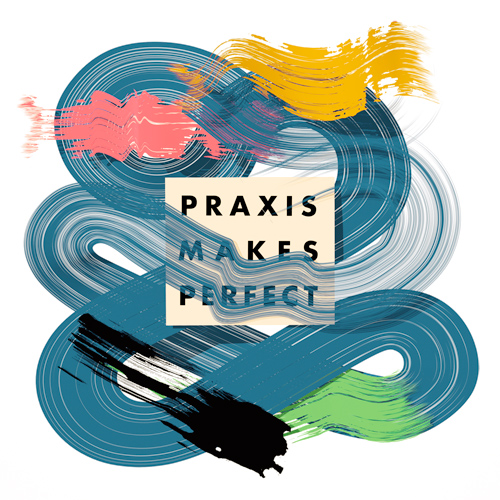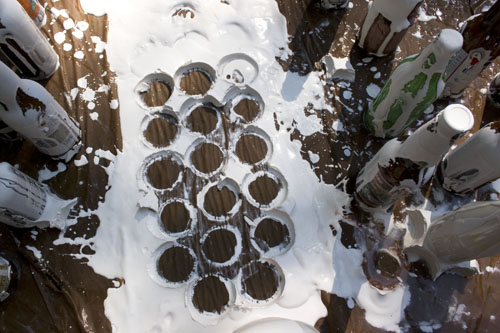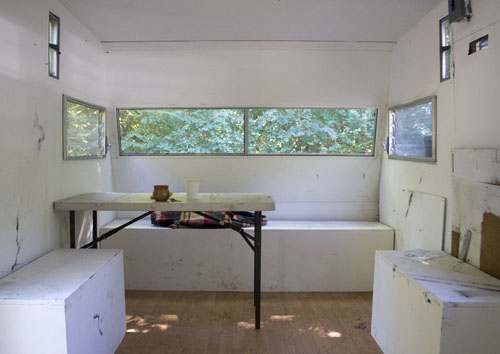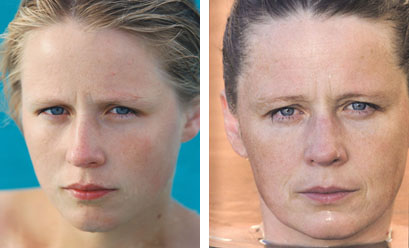There are always forces at odds in this world of dualities, often beautifully illustrated by actions occurring in nature. Order is challenged by chaos, movement disrupts balance, struggle defies rest. Perhaps I consider these forces more in recent days with the shifting seasons. More likely, I consider them in relation to the remarkable spectrum of artists and practices I have encountered during the last month. They, too, exist as powerful forces of nature.
A few weeks ago, I participated in a discussion group led by visiting art critic and theorist Lane Relyea. The discussion, focused around his article entitled From Institutional Critique to the Myth of Spontaneous Socializing, explored ideas around recent shifts to a “more communication-based idea of radical transparency” and the embrace of everyday practice in the art world. In contrast to the static identities of many institutions, artists now openly embrace a wide range of roles and tasks as part of their art practice. The distinctions between work, life and socializing with other artists in “the everyday” are indistinguishable.
Relyea argues that these dissolving separations have reconciled realist pragmatism and utopian idealism, thus “illuminating a new age of innocence” for contemporary artists. While we had also discussed some of these ideas in graduate school, it now resonates more deeply as I have shifted from the theoretical to the practical. It’s one thing to be debating these ideas from the comfortable seats of a lecture hall; it’s quite another to be considering them as they pertain to an active career.
So, what does it mean to be pragmatic? The concept is based on the premise that the human capability to theorize is necessary for intelligent practice. Theory and practice are not separate spheres; rather, these theories are designed to help us negotiate our way, to find our way in the world, our niche in the market and/or academia. As the philosopher John Dewey stated, “there is no question of theory versus practice but rather of intelligent practice versus uninformed practice.”
In short, this all means digging in. This means creating those spaces for ourselves where we need them, and inviting our contemporaries in as partners and collaborators. This is where those human forces of nature come in, the ones who propel us forward with their vision. I recently reconnected with one such positive force in the form of an artist named Haynes Riley. With coinciding fall residencies at Ox-Bow, a program in Western Michigan affiliated with The School of The Art Institute of Chicago, Haynes and I have shared some good conversation about the post-MFA transition and his current gallery project, Good Weather.
In the spirit of alternative spaces, I interviewed Haynes one afternoon in a small white trailer-cum-gallery currently situated on the Ox-Bow grounds. The trailer serves as the mobile home of artist Nate Tonning’s FrontierSpace Gallery (which I’m hoping to use as an experimental site later in the residency). Stepping into the trailer and settling onto a custom-covered wheel well, I thought it an especially appropriate site to discuss “the spaces that keep things rolling.”
Haynes graduated from Cranbrook’s 2D Design Program in 2011. Since then, he has interwoven travel and freelance projects with the development of Good Weather, an intimate space with refinished gallery walls in a single car garage located in his hometown of North Little Rock, Arkansas. His principal pursuit with this project, as he states, is “the creation of possibility.” Intrigued by a garage he discovered in Houston that had been transformed into a living room, Haynes is exploring ideas related to the American suburban garage as “under-utilized space transformed into a participant-guided gallery and maker space.” Considering the role of curator as facilitator, Haynes is open about his core desire to support friends in need of an open and flexible space. Good Weather has an inherently positive tone, reflecting Haynes’ genuine and disarming personality.
Every artist needs a sounding board, and I think we especially need this to fill the inevitable gap that occurs after leaving behind the rigor and scheduled critiques of graduate school. As for Haynes’ role in giving feedback, it’s just as vital for him to engage on that level as it is for the artist(s) receiving his support and advice. This engagement is all part of his practice, as is his embrace of a space morphing between studio and exhibition space. He is earnest in his desire to help his contemporaries land in a good place, aided by some fruitful time in the land of Good Weather (the gallery’s inaugural show opens October 18th, featuring the work of artist Tony Garbarini).
The scope of this project is reminiscent of The Suburban, the critically-acclaimed artist exhibition space in Oak Park, Illinois (see here for an Art21 Blog profile of this space). Artists Michelle Grabner and Brad Killam have been running the space out of their home for over a decade, beginning with an 8 x 8′ space with cinderblock walls. When The Suburban was conceived over ten years ago, I think it’s safe to say there was a heavier focus on institutional critique in the creation of such alternative spaces. Now, as some of those spaces have moved into the forefront of dialogue surrounding contemporary art, the primary aim is shifting to a different place. In response to a struggling economy and a lack of governmental funding for the arts, many artists just want to find solid places to make and exhibit their work.
Returning to Haynes’ concept for Good Weather – there is also something undeniably powerful in the idea of weathering. In 1994-95, artist Roni Horn completed a project entitled You are the Weather. The series featured 100 close-up portraits of a pale-faced woman emerging from a geothermal pool in Iceland. In each image, the woman’s facial expressions changed slightly with each shift in atmospheric conditions. As part of her 2011 show at Hauser & Wirth London, Horn completed You are the Weather, Part 2. This follows the same form and features the same model, 15 years later.
The portraits are beautiful and meditative, as is seeing the natural and inevitable passage of time. But it is the title that resonates most, even if I’m subverting the original intention. You are the Weather. Natural forces are at odds in both our bodies and our minds, constantly. Order is challenged by chaos, movement disrupts balance, struggle defies rest. As we embrace an increasingly diversified practice, and anticipate the balancing act, I try not to confuse this new age of supposed innocence with the concept of purity. For things are already a mess, and it keeps things interesting. But I do like this idea of innocence in relation to a renewed sense of honesty and earnestness, as we continue to reassess and redefine how and where we create. It’s good to shake up the trees, and to let the good wind blow.







